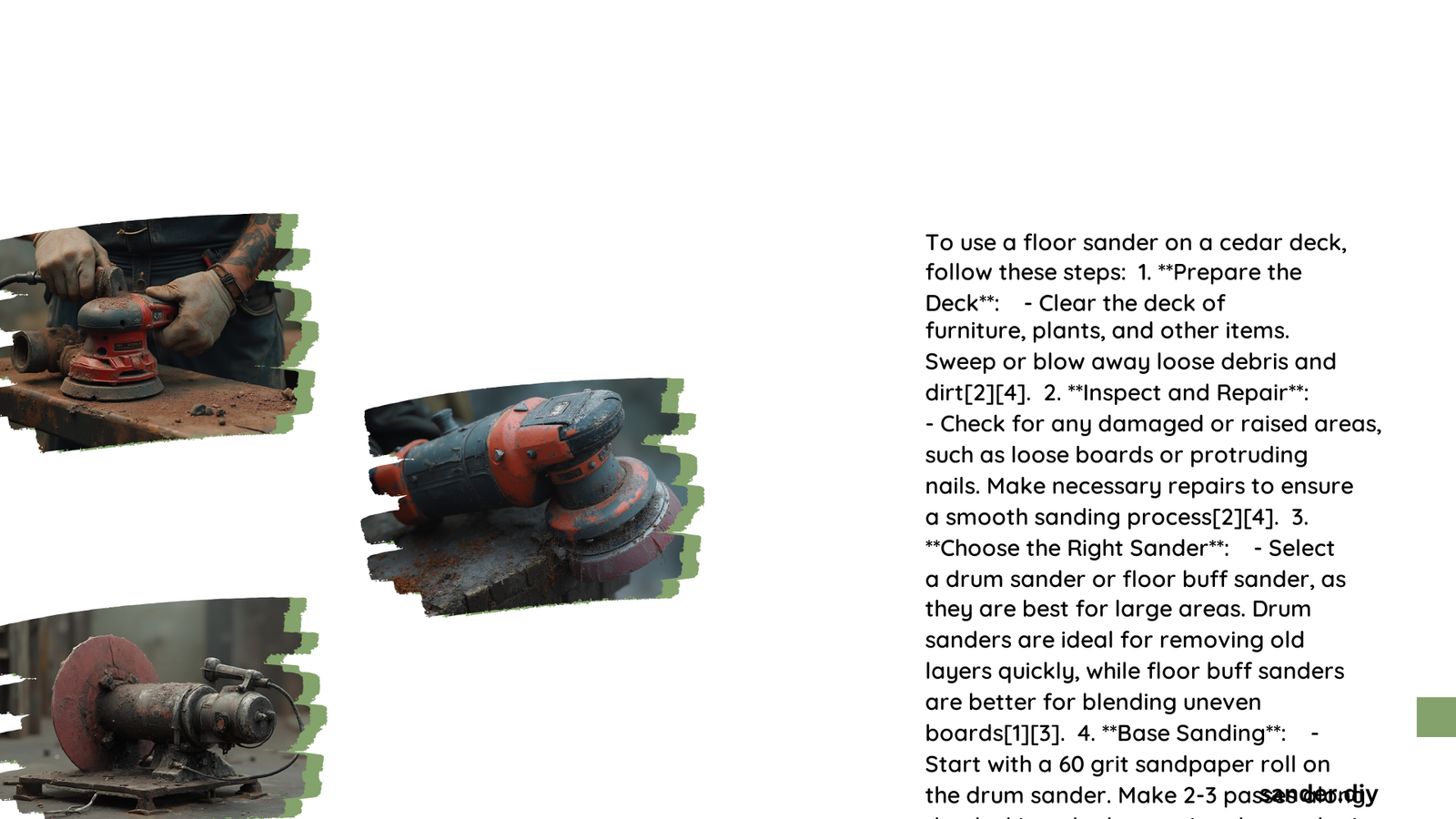Sanding a cedar deck requires precision, proper equipment, and systematic approach. Homeowners and DIY enthusiasts can transform weathered cedar surfaces into smooth, refreshed outdoor spaces by understanding floor sander techniques, selecting appropriate grit sandpapers, and following professional-grade methodologies. This comprehensive guide will walk you through every critical step of using a floor sander effectively on your cedar deck.
What Preparation Steps Are Needed Before Sanding?
Clear and Clean Deck Surface
Before initiating the sanding process, complete thorough preparation:
- Remove all furniture, planters, and decorative items
- Sweep deck thoroughly to eliminate loose debris
- Inspect for damaged or loose boards
- Repair or replace compromised wooden sections
- Ensure complete surface dryness
Essential Tools and Equipment
| Tool | Purpose | Recommended Grit |
|---|---|---|
| Drum Sander | Primary Surface Sanding | 40-60 grit |
| Random Orbital Sander | Edge and Detail Work | 60-80 grit |
| Protective Gear | Personal Safety | N/A |
How to Select Appropriate Sander for Cedar Deck?

Sander Type Considerations
Cedar’s soft nature demands careful sander selection:
- Drum Sander
- Powerful and aggressive
- Best for large, flat deck surfaces
-
Requires careful handling to prevent gouging
-
Floor Buff Sander
- Gentler approach
- Excellent for uneven or slightly warped boards
-
Provides more controlled material removal
-
Random Orbital Sander
- Ideal for edges and hard-to-reach areas
- Minimizes aggressive material removal
- Provides smoother finish
What Sanding Technique Ensures Best Results?
Systematic Sanding Process
Follow these professional techniques:
- Always sand parallel to wood grain
- Maintain consistent, overlapping passes
- Start with coarse-grit sandpaper (40-60 grit)
- Progress gradually to finer grits (80-120 grit)
- Keep sander moving to prevent uneven surfaces
- Use light, steady pressure
Common Mistakes to Avoid
- Stopping sander while in contact with wood
- Sanding against wood grain
- Using worn-out sandpaper
- Neglecting dust collection
- Skipping intermediate grit levels
How to Manage Dust and Safety?
Personal Protection
- Wear dust mask
- Use safety glasses
- Utilize hearing protection
- Wear work gloves
- Ensure proper ventilation
Dust Management Strategies
- Use sanders with integrated dust collection
- Work in well-ventilated areas
- Clean workspace between sanding stages
- Dispose of wood dust properly
What Post-Sanding Steps Are Crucial?
Final Surface Preparation
- Vacuum thoroughly
- Wipe surface with tack cloth
- Inspect for missed spots
- Apply wood conditioner if needed
- Prepare for staining or sealing
Pro Tips for Cedar Deck Sanding
- Test sander on inconspicuous area first
- Rent professional-grade equipment
- Consider hiring professionals for large decks
- Allow adequate drying time between stages
- Maintain consistent sanding technique
Recommended Sanding Sequence
- Initial rough sanding (40-60 grit)
- Medium grit smoothing (80 grit)
- Fine finishing (120-150 grit)
- Final polish (optional 220 grit)
Maintenance Recommendations
- Sand deck every 2-3 years
- Apply protective sealant after sanding
- Regular cleaning prevents premature wear
- Address minor damages promptly
Note: Cedar is a soft wood requiring delicate handling. Patience and careful technique are key to achieving professional results.
